
Bookkeeping Course For Business Owners
Bookkeeping Course For Business Owners
Unlock your business's potential with the Small Business Accounting Essentials course! Gain the confidence to manage your business's finances effectively, make informed decisions, and ensure compliance. Transform accounting from a daunting task into a strategic advantage. With practical insights and tools, you’ll simplify financial management, boost profitability, and set your business up for long-term success.
Course Curriculum
Section 1. Introduction to Accounting
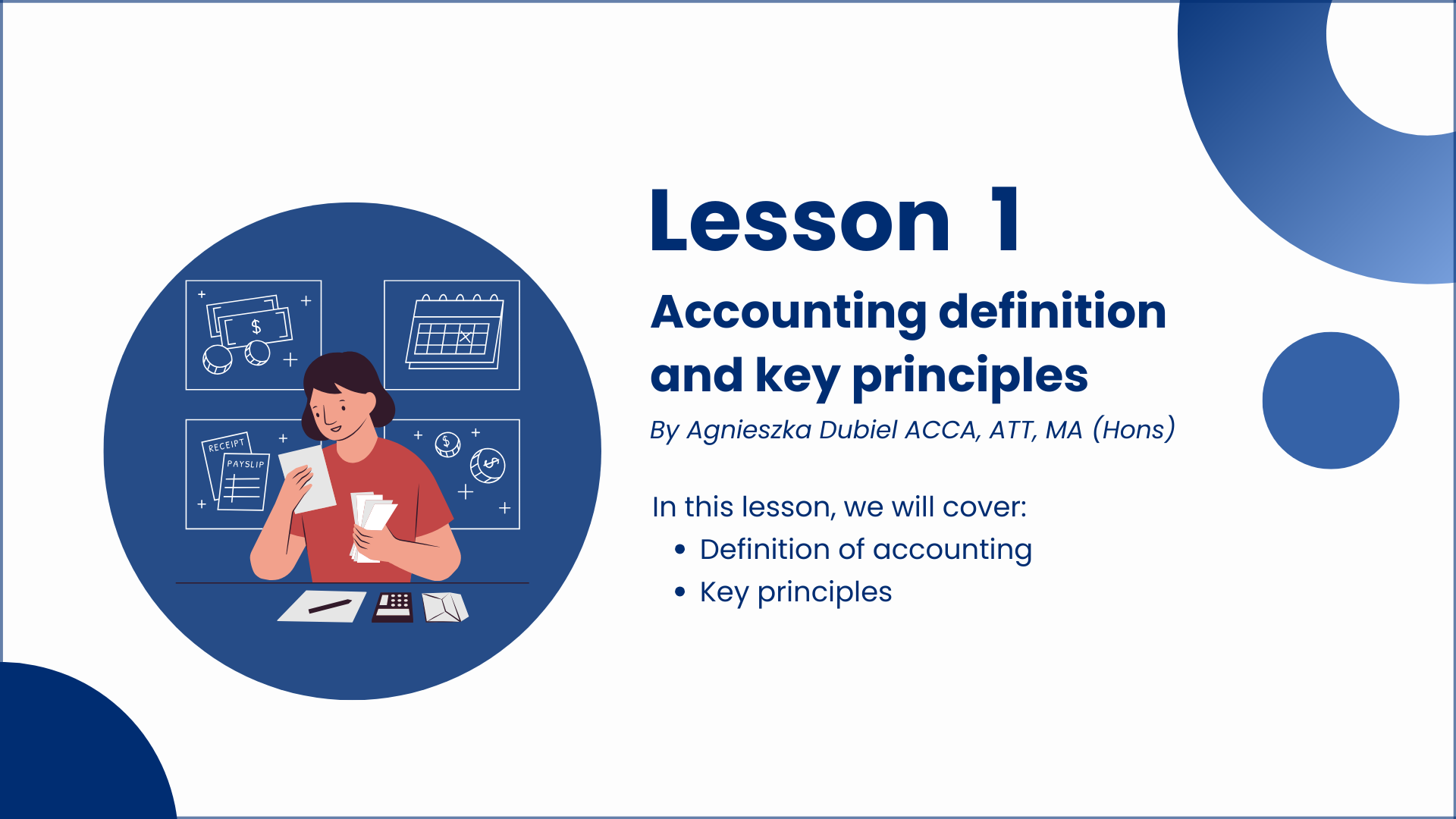
Lesson 1 - Definition and key principles
In this lesson, we will define accounting and explain why it is considered the "language of business." You will learn about the key principles—consistency, relevance, reliability, and comparability—that guide accurate and meaningful financial reporting. You will understand the foundational concepts that make accounting essential for business success.
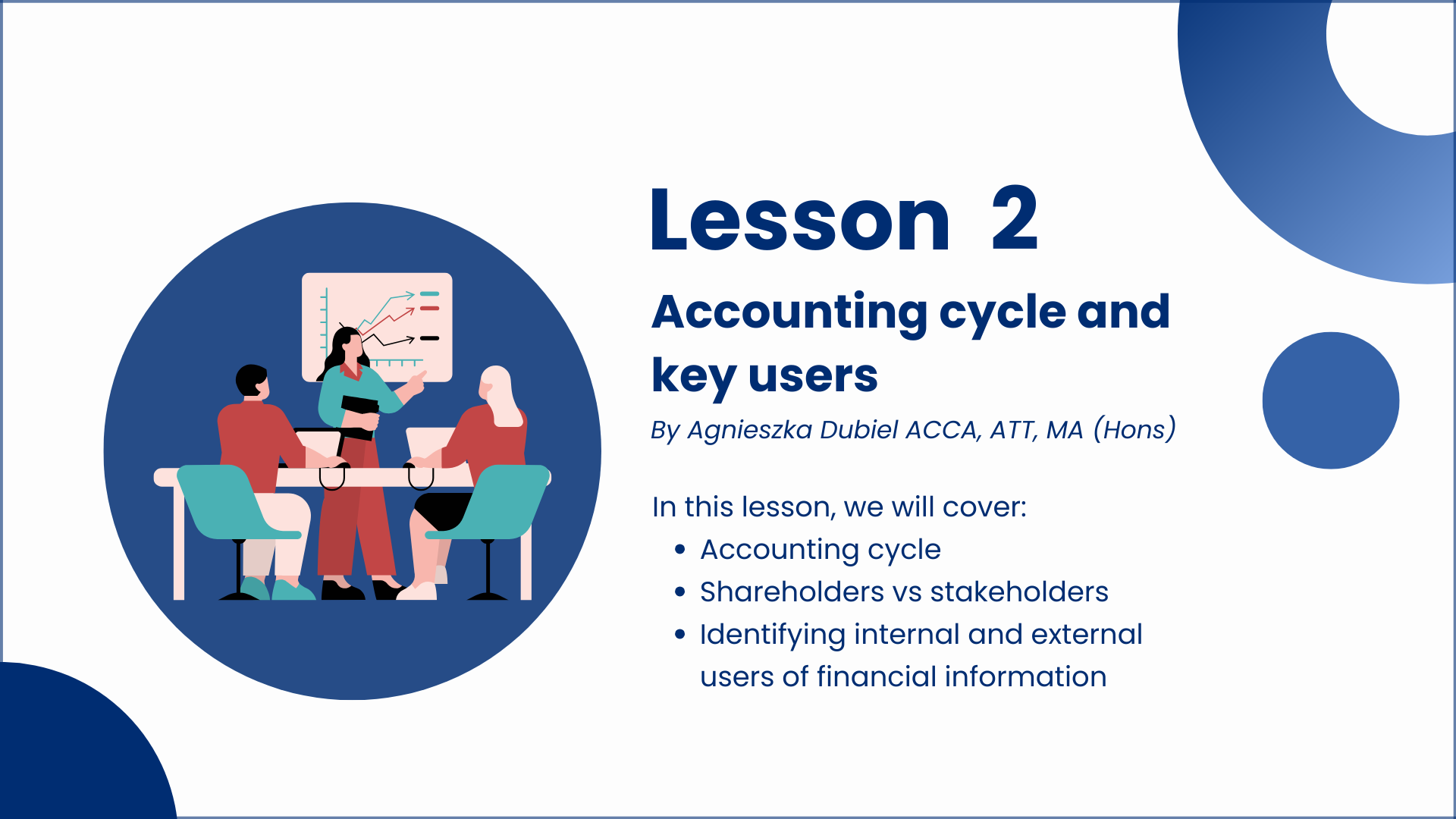
Lesson 2 - Accounting cycle and key users
In this lesson, we will break down the steps of the accounting cycle, from identifying transactions to closing the books, ensuring you understand the process of maintaining accurate financial records. You will also learn the differences between shareholders and stakeholders and the importance of identifying internal and external users of financial information. You will learn how these concepts support effective decision-making and build trust with key stakeholders.
Section 2. Bookkeeping
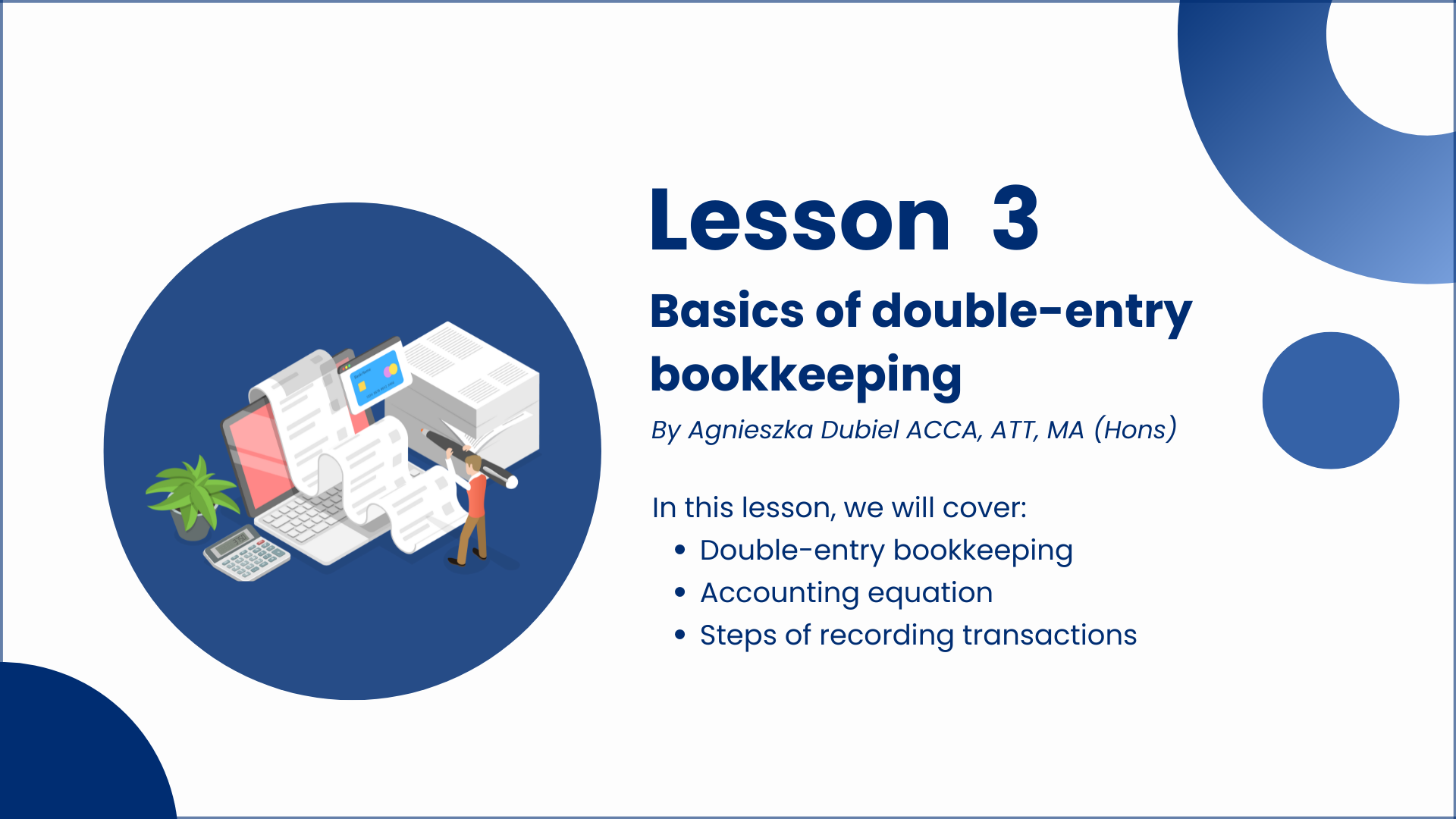
Lesson 3 - Basics of double-entry bookkeeping
In this lesson, you will dive into the essential concept of double-entry bookkeeping, the "backbone" of accurate financial record-keeping. You’ll learn how every transaction impacts at least two accounts, ensuring the accounting equation stays balanced. Key terms like assets, liabilities, equity, income, and expenditure will be explained, along with practical examples to demonstrate how to record transactions using debits and credits.

Lesson 4 - Chart of accounts
In this lesson, we will explore the Chart of Accounts, the cornerstone of a company’s financial system. You will learn what it is, how it it structured, and the key components it includes, such as assets, liabilities, equity, income, and expenses. We will discuss its importance in maintaining accurate and organised records, ensuring consistent financial reporting, and enabling effective decision-making.
Section 3. Invoicing and document organisation
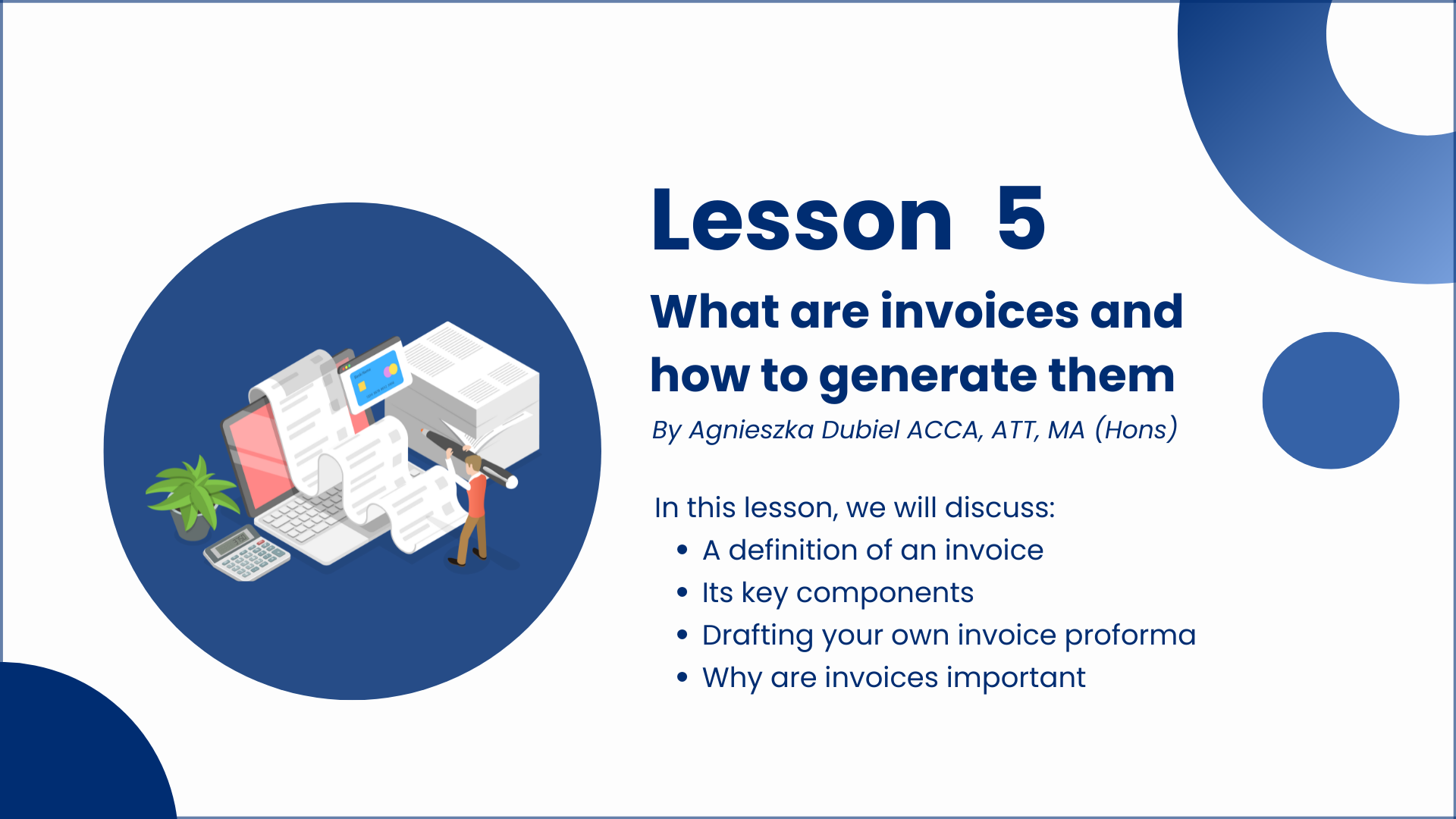
Lesson 5 - What are invoices and how to generate them
In this lesson, we will explore the essentials of invoicing, a critical aspect of business transactions. You will learn what invoices are, their main components, and how to create a professional invoice template for your business. Invoices are crucial in maintaining accurate financial records, managing cash flow, and strengthening client relationships.
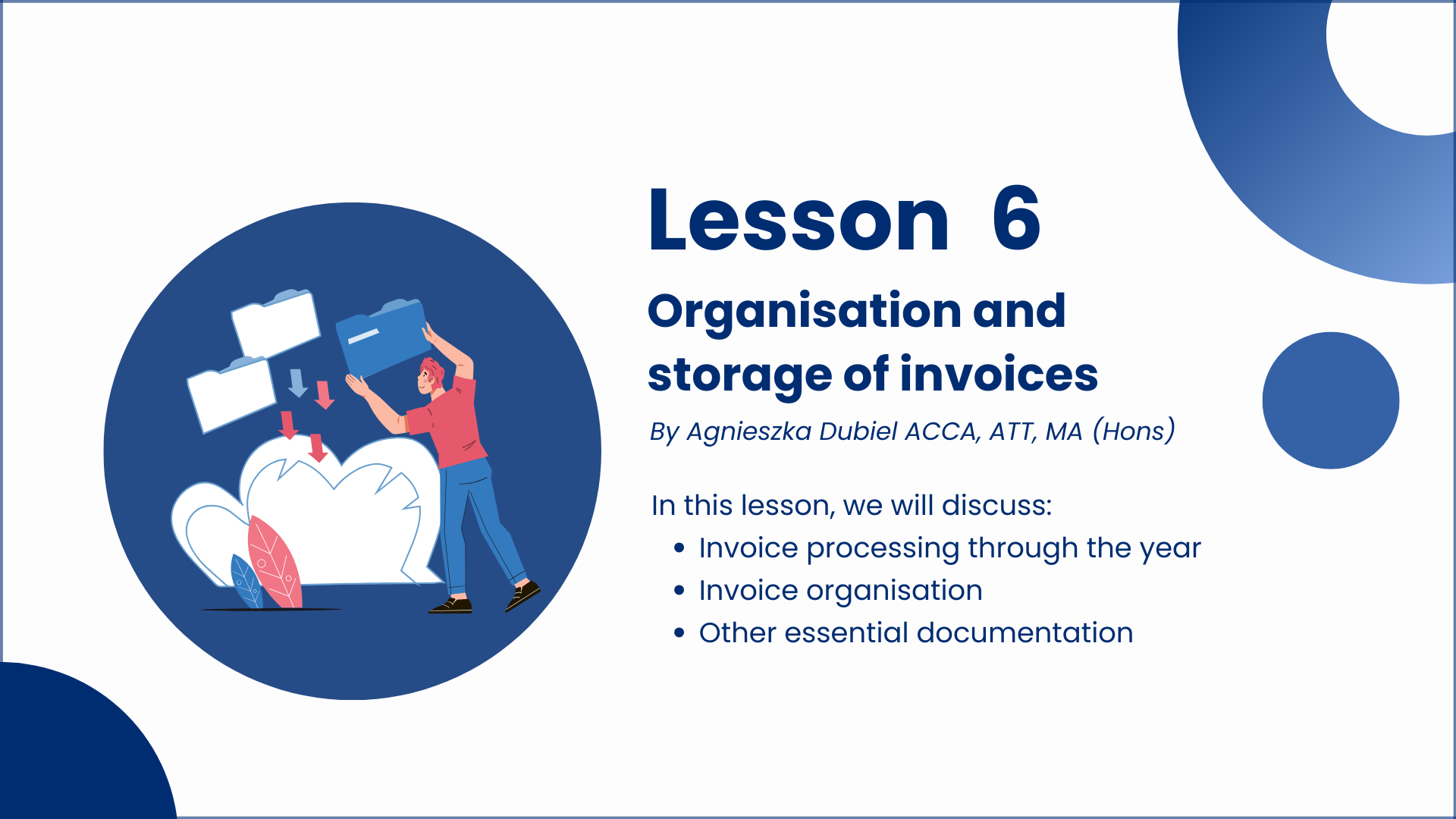
Lesson 6 - Organisation and storage of invoices
In this lesson, we will focus on organising and storing invoices to streamline your financial processes. You will learn how to manage invoices effectively, whether using a manual or digital system, and how to structure your records for easy access. We will also discuss the importance of adhering to retention periods, secure data storage, and how these practices support smooth business operations and legal obligations.
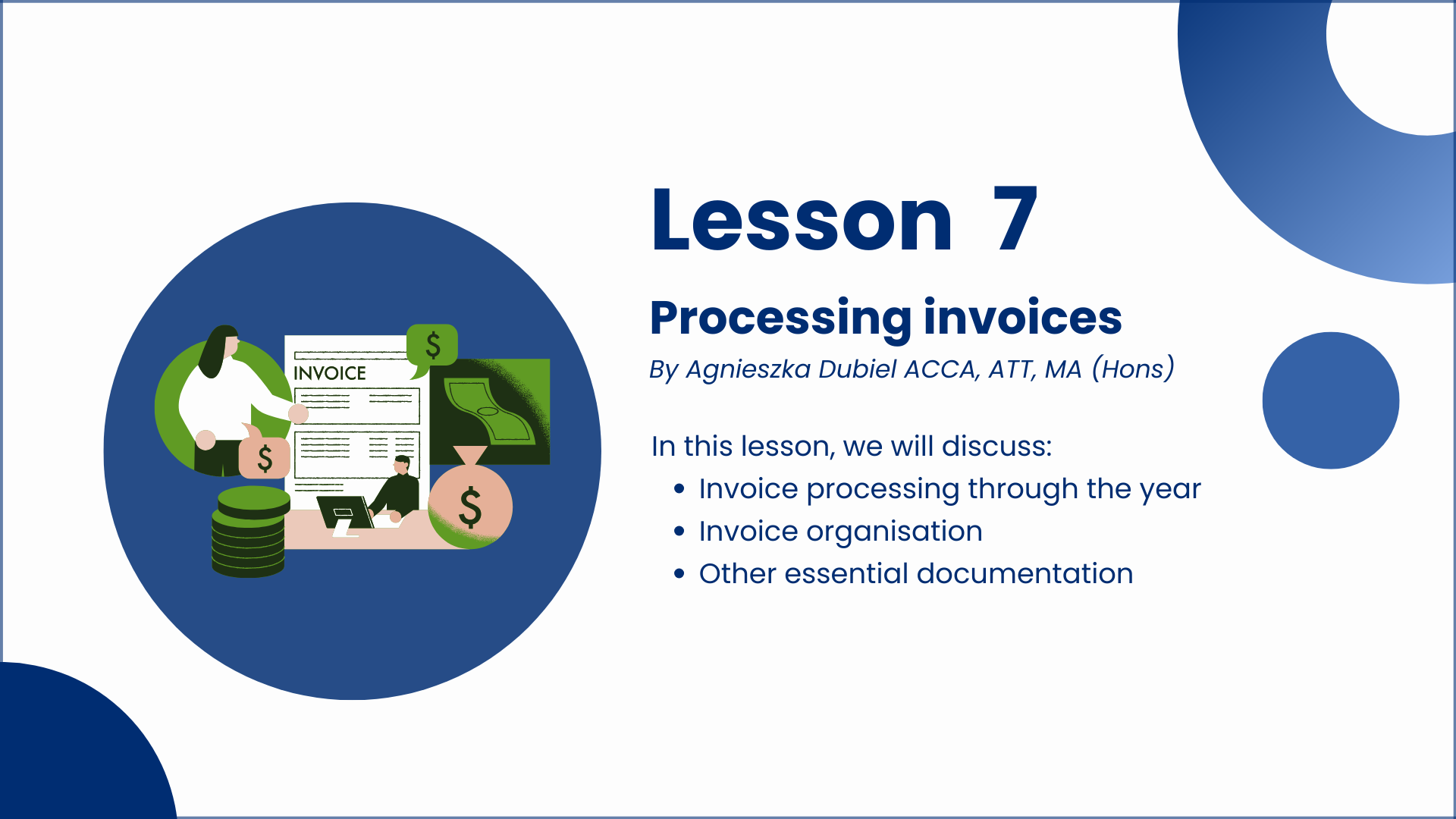
Lesson 7 - Processing Invoices
In this lesson, we will dive into the step-by-step process of handling both income and expenditure invoices. Building on what we have covered about invoices so far, you will learn how to efficiently process them, from receiving and reviewing to recording and storing. For expenditure invoices, we will explore key steps like verifying details, scheduling payments, and ensuring secure storage. On the income side, we will walk through creating, sending, tracking, and recording invoices.
Section 4. Cash and bank reconciliations
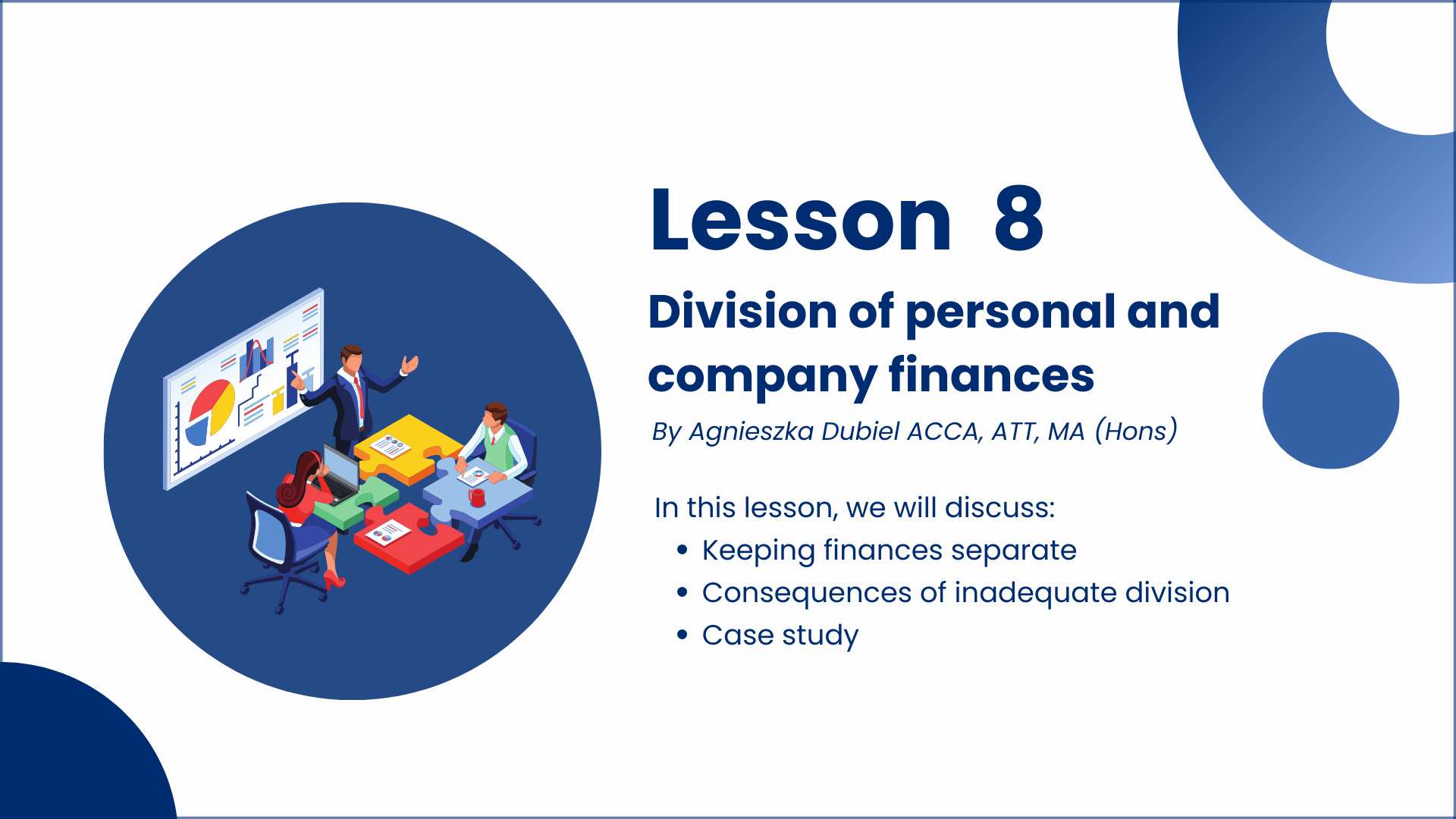
Lesson 8 - Division of personal and company finances
In this lesson, we will uncover why separating your personal and business finances is crucial for sound financial management. You will learn about the distinctions between sole traders and limited companies, the risks of not maintaining this separation, and practical steps to establish clear boundaries. We will also discuss how to address invoices correctly based on your business structure.
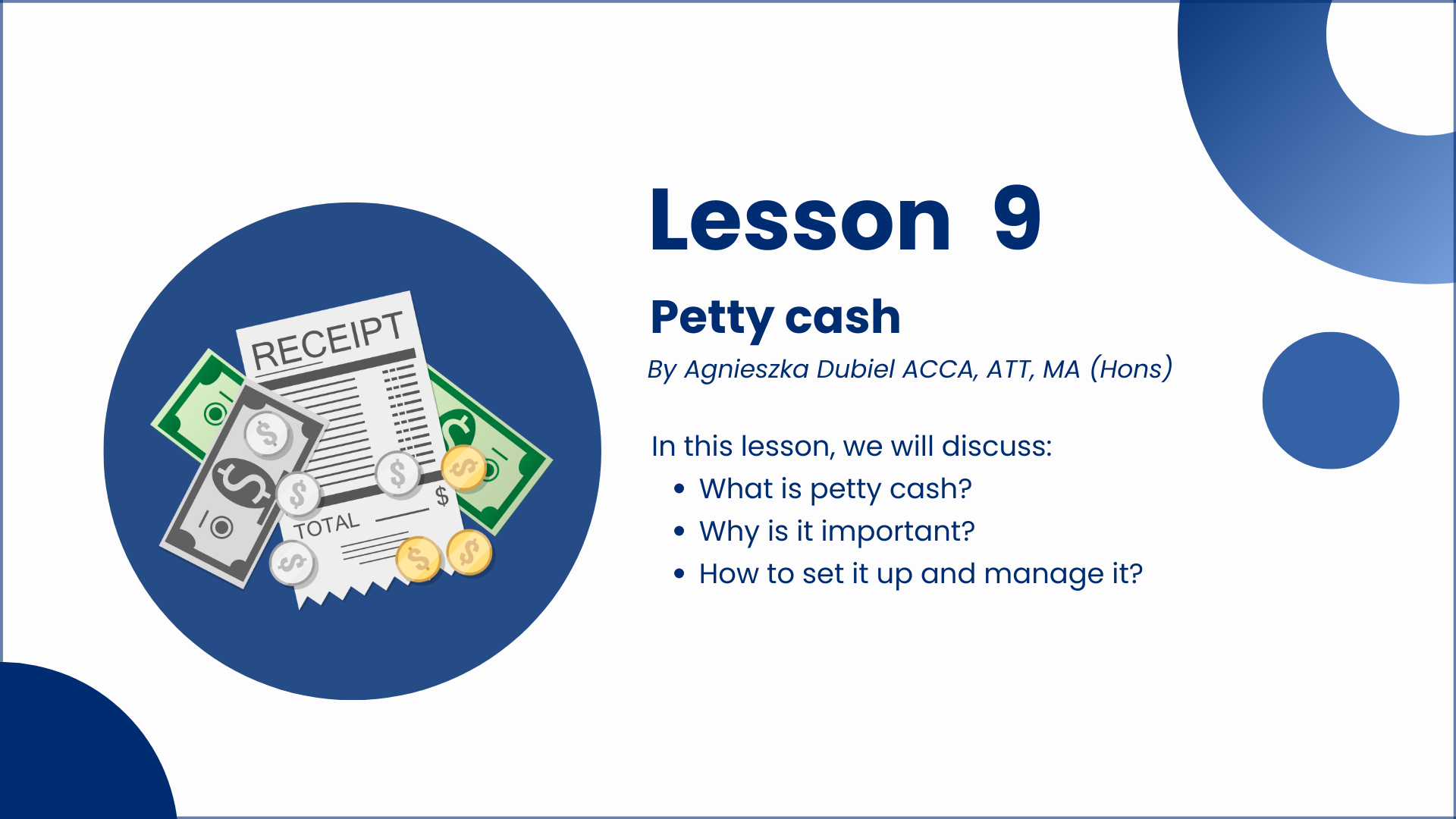
Lesson 9 - Petty Cash
In this lesson, we focus on petty cash—a handy reserve for managing minor business expenses. You will earn what petty cash is, how to set it up, manage it effectively, and ensure its security. We will cover essential practices like maintaining a petty cash log, replenishing funds, and reconciling balances to ensure accuracy. You will also discover best practices for preventing misuse and fraud. By the end of this lesson, you will have the tools to manage petty cash confidently, supporting smooth day-to-day operations for your business.
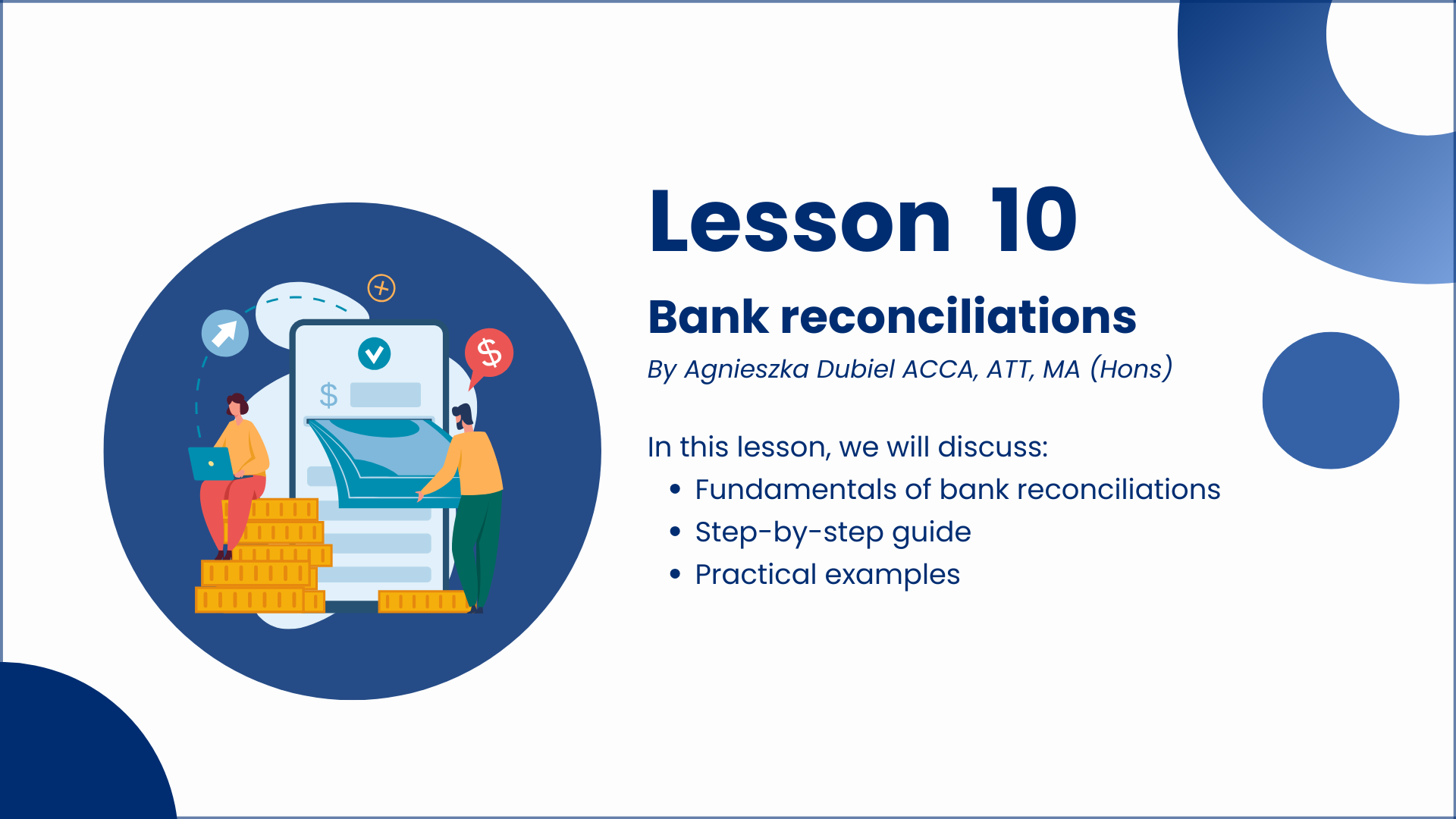
Lesson 10 - Bank Reconciliations
In this lesson on bank reconciliations, you will learn how to match your financial records with your bank statements to ensure accuracy. This process helps detect fraud, manage cash flow, and maintain compliance. We will walk through the reconciliation process step-by-step, explore common discrepancies, and see how to resolve them. Additionally, you will learn how accounting software, like Xero, can streamline the process.
Section 5. Running the business
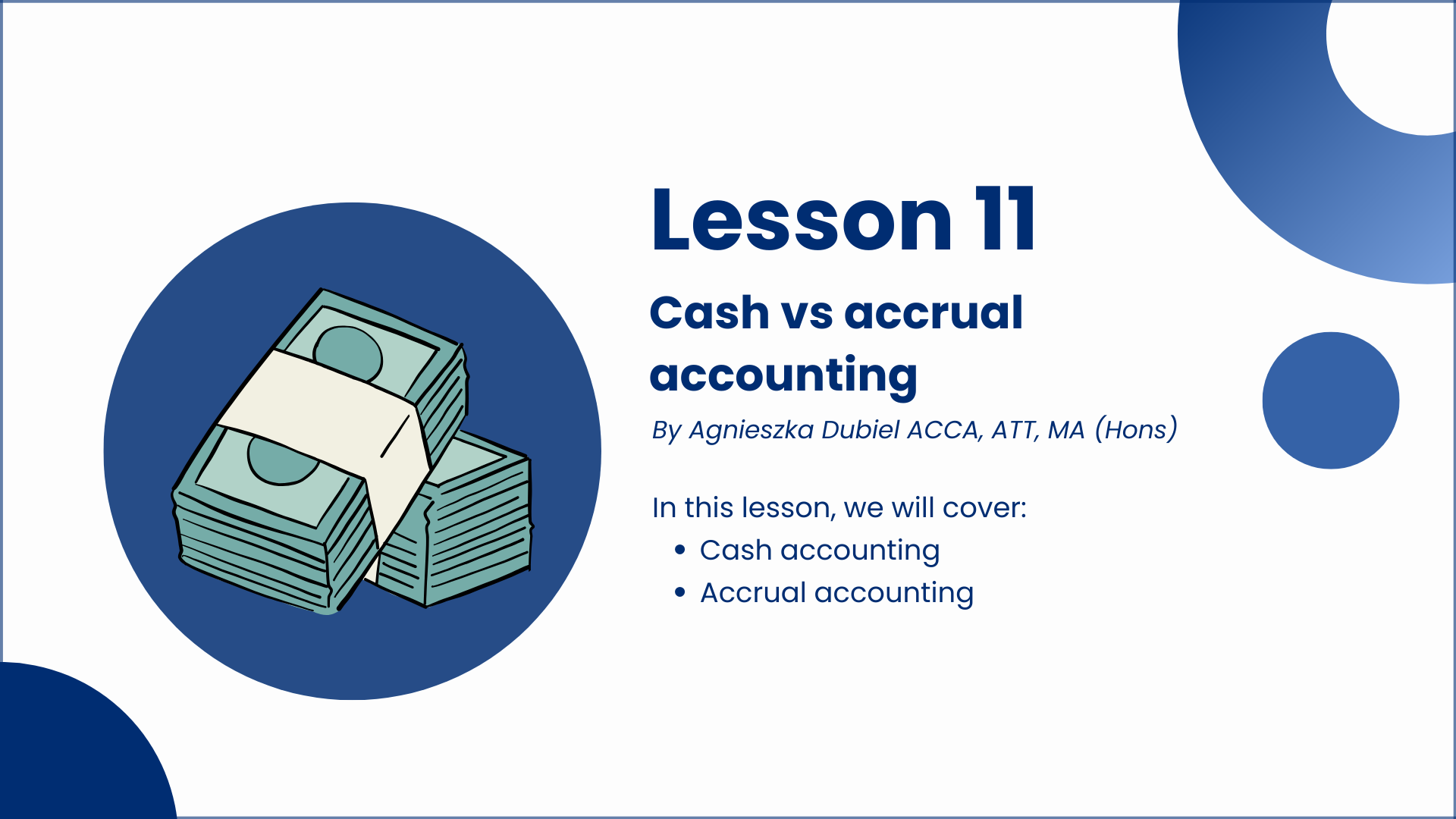
Lesson 11 - Cash vs accrual accounting
In this lesson on cash vs accrual accounting, you will learn the differences between these two methods. We will discuss the advantages and disadvantages of each, explore examples, and explain which method might be best for your business.
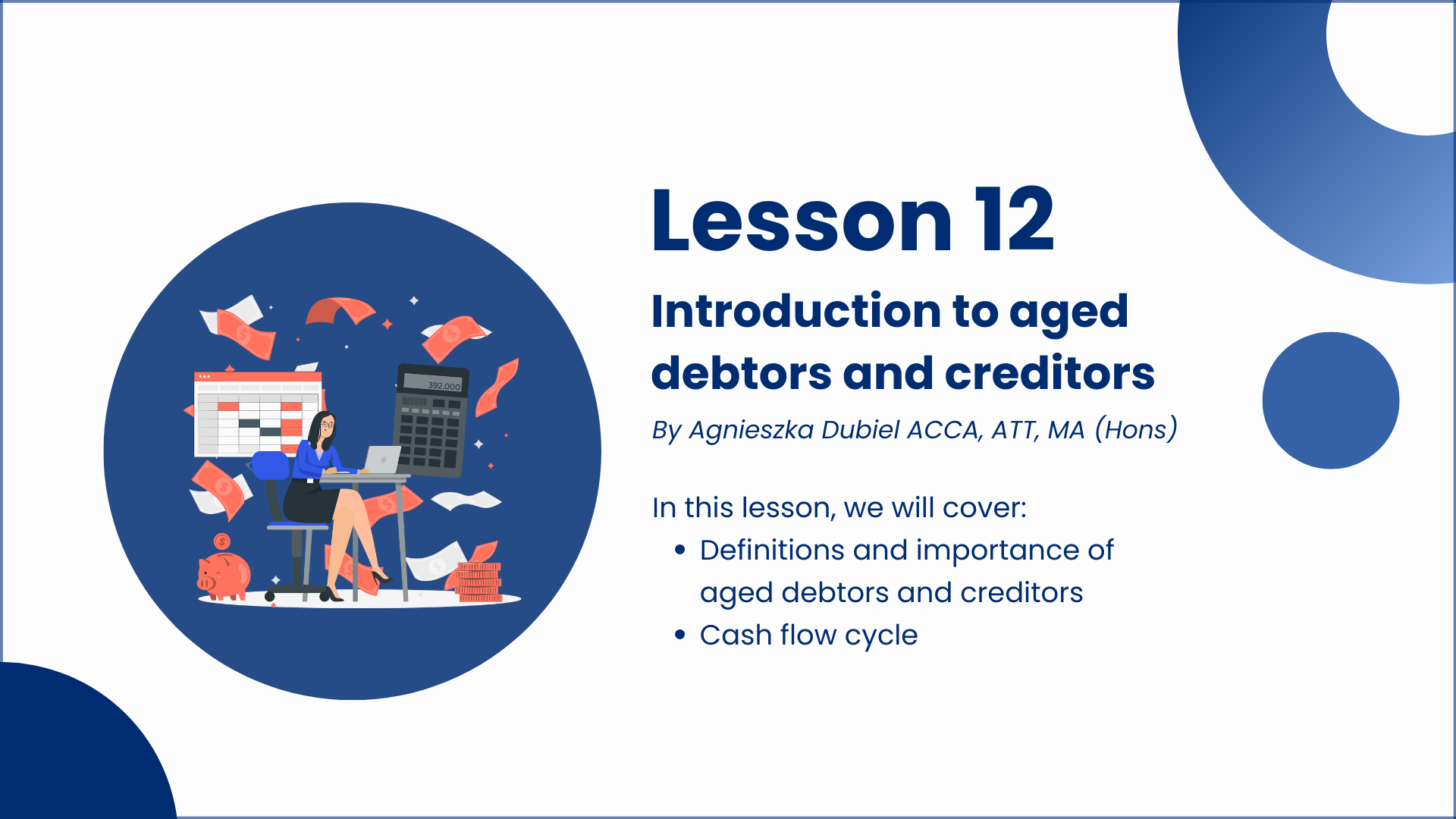
Lesson 12 - Introduction to aged debtors and creditors
In this lesson, you will learn about aged debtors and creditors reports, which are crucial for managing cash flow and financial obligations. We will define debtors and creditors, explain how these reports track outstanding balances, and discuss their importance in both cash and accrual accounting. You will also understand their role in the cash flow cycle and how to manage them for better financial health.
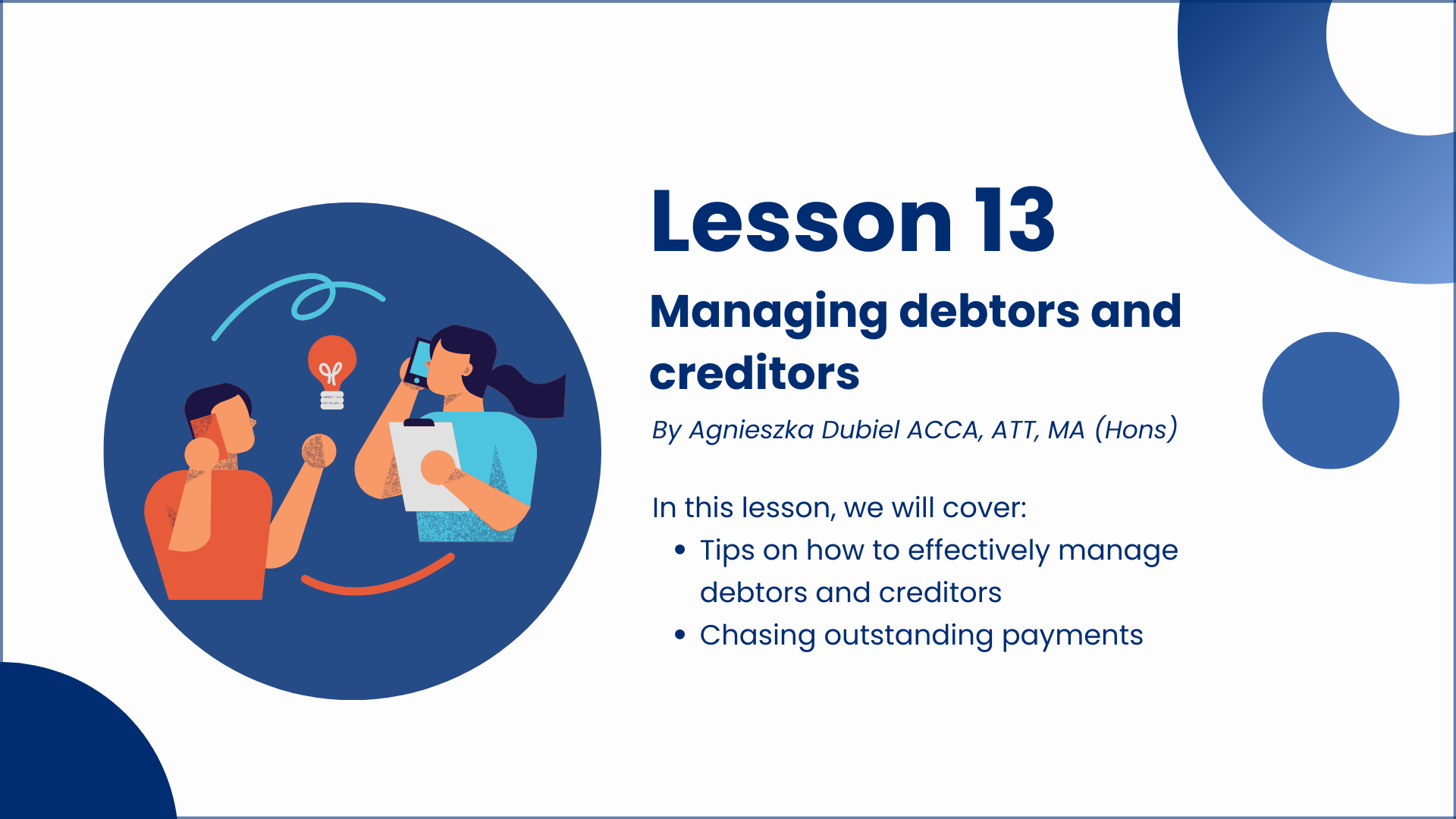
Lesson 13 - Managing debtors and creditors
This lesson focuses on managing debtors and creditors to maintain healthy cash flow in your business. It covers setting clear payment terms with customers, tracking overdue payments, and automating reminders. For creditors, it emphasises negotiating favourable terms, prioritising payments, and taking advantage of early payment discounts.
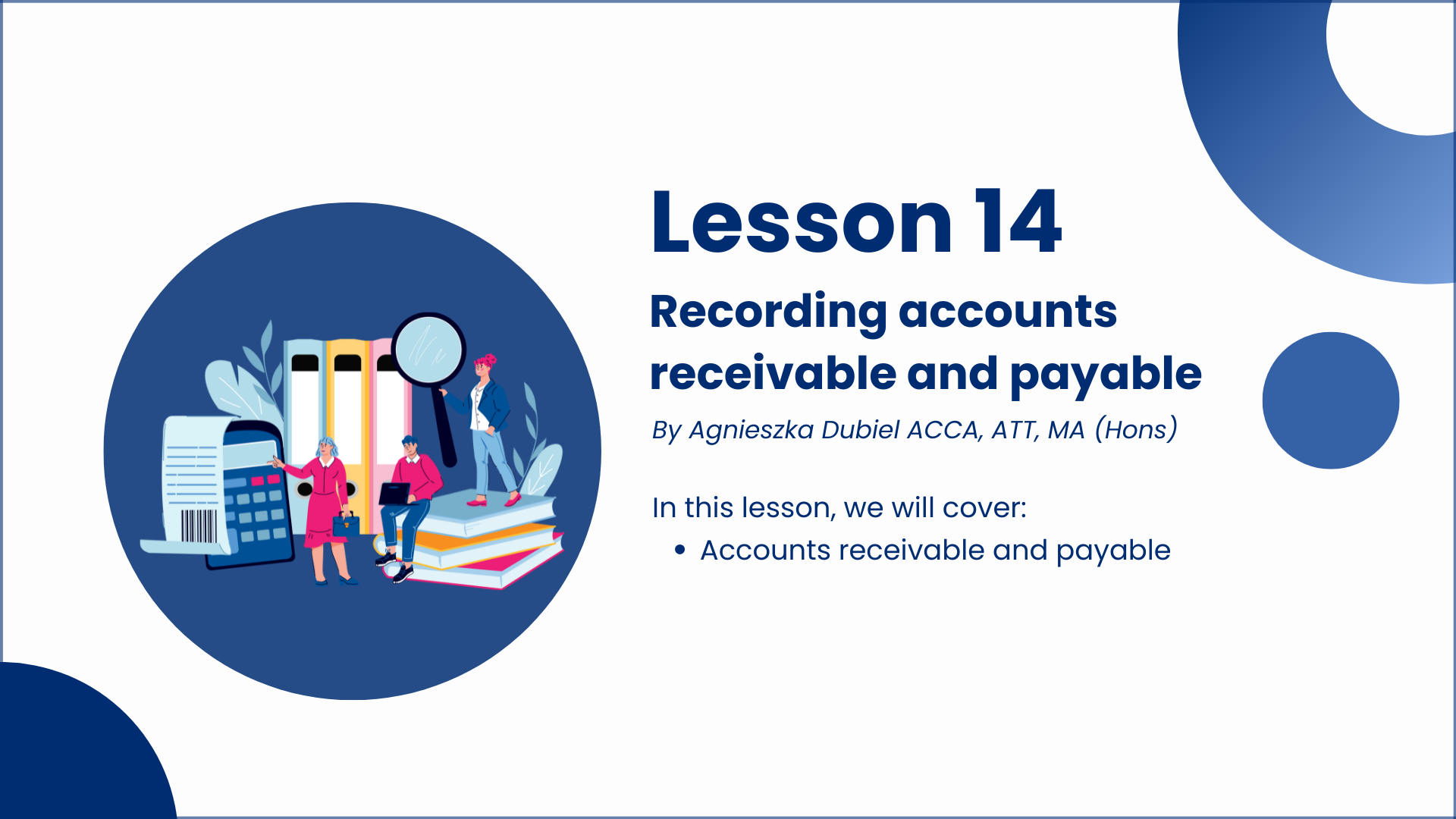
Lesson 14 - Recording accounts receivable and payable
This lesson covers accounts receivable and payable under accrual accounting, including the differences between debtors and creditors, aged reports, and how to record transactions for both receivables and payables.
Section 6. Year-End Procedures
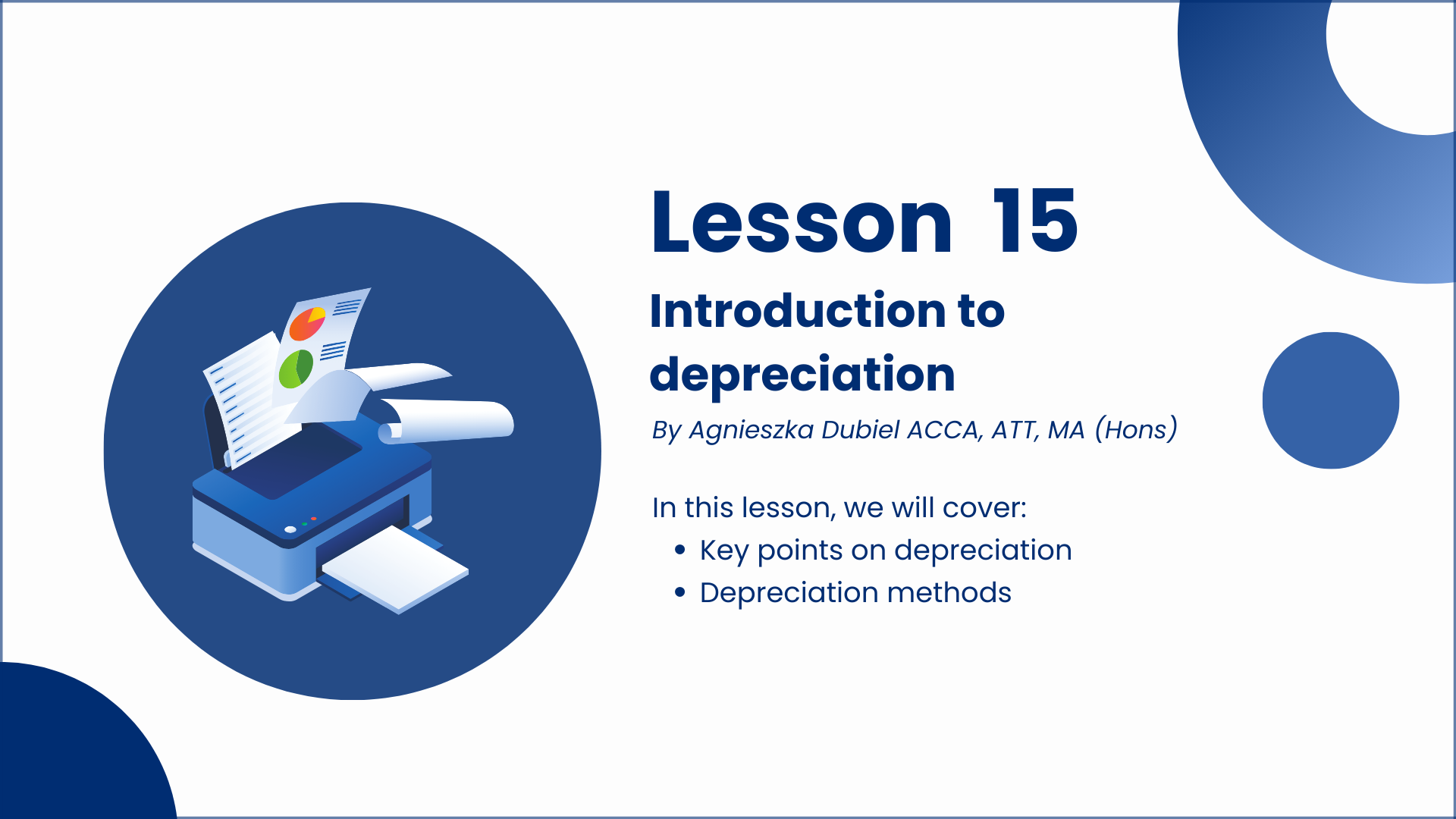
Lesson 15 - Introduction to depreciation
In this lesson, we cover the basics of depreciation, including the straight-line and reducing balance methods. You will learn how depreciation affects your financial statements and how to calculate depreciation for different types of assets.
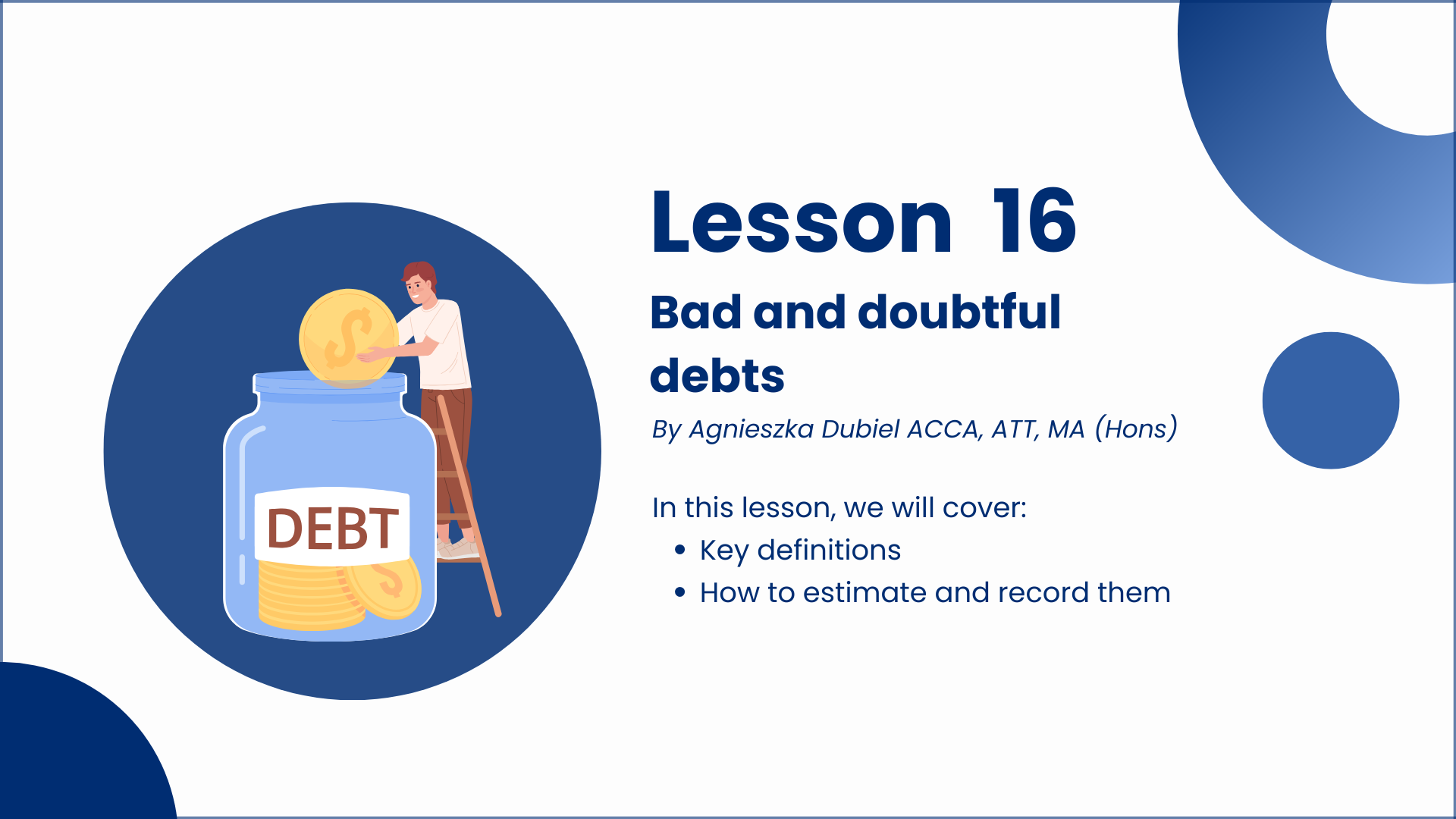
Lesson 16 - Bad and doubtful debts
In this lesson, we will cover the basics of bad and doubtful debts, including how to record and estimate them. You will learn how to account for these debts under accrual accounting, using methods like the percentage of receivables and aging analysis. We will also walk through practical examples to help clarify these concepts.
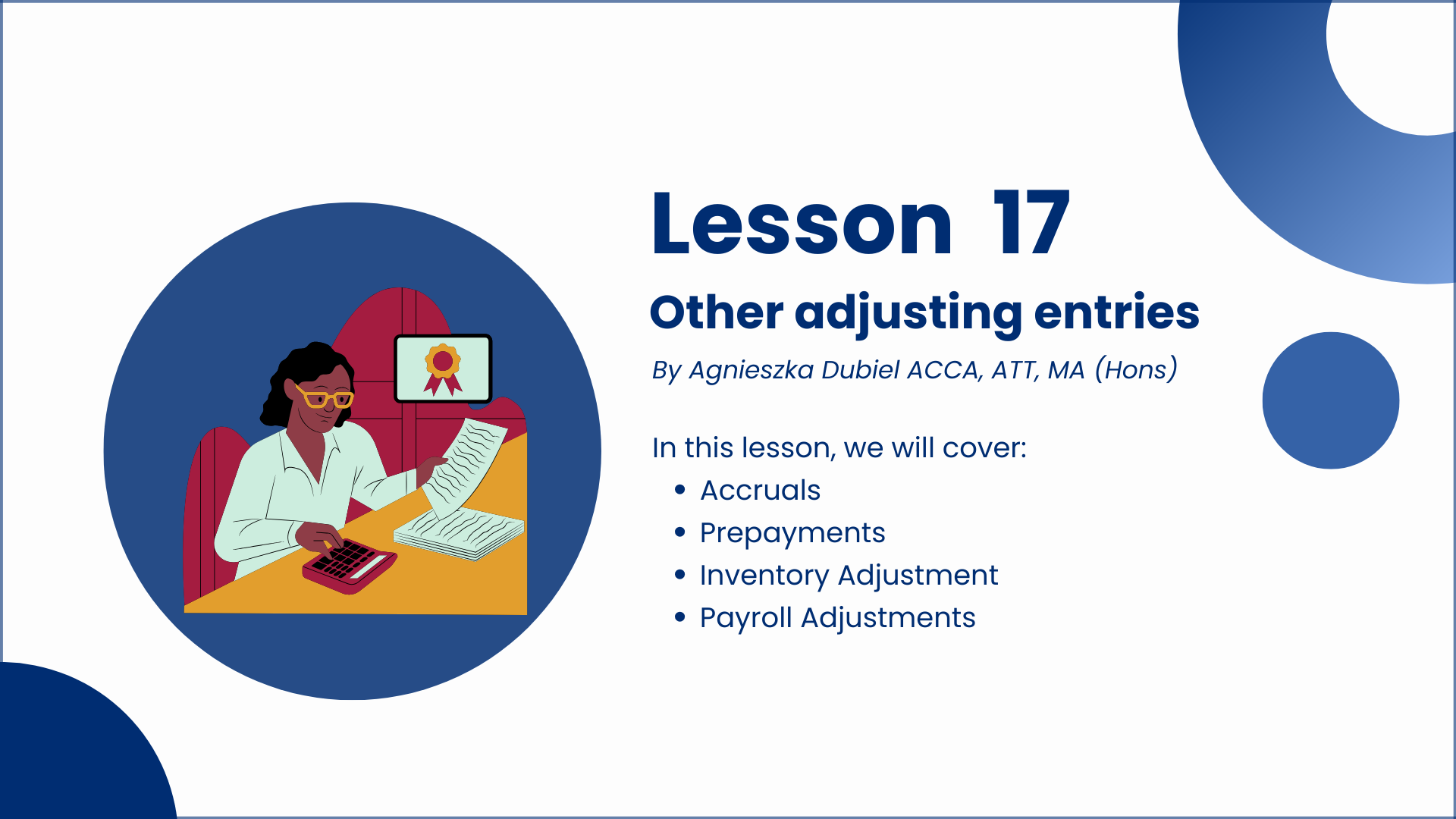
Lesson 17 - Other adjusting entries
In this lesson, we will explore the four key types of adjusting entries: Accruals, Prepayments, Payroll Adjustments, and Inventory Adjustments. You will learn how each adjustment helps ensure your financial statements accurately reflect your business’s performance. We will cover definitions, examples, and journal entries for each adjustment type, focusing on how they align with the accrual basis of accounting.
Have questions or need assistance? We’re here to help! Reach out to us via email. Want to learn more? Follow us on social media for the latest updates and tips.
Sign up to our newsletter!
Copyright © 2024 Small Biz Accounting Solutions Ltd. All Rights Reserved
